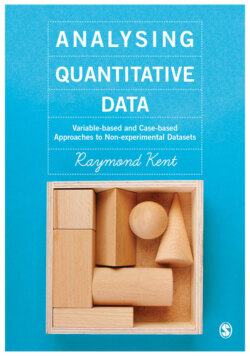Читать книгу Analysing Quantitative Data - Raymond A Kent - Страница 13
На сайте Литреса книга снята с продажи.
Key points and wider issues
ОглавлениеData do not exist ‘out there’, waiting to be ‘collected’ or ‘discovered’. Rather, they are constructed by individuals within a social, economic, political and moral matrix of possibilities and constraints. They are generated as a result of the human activity of systematic record-keeping using a range of data capture instruments. Data are of very different types. They may be qualitative or quantitative, or some mixture. There are, furthermore, different types of each. Qualitative data may be words, phrases, text, images or a mixture. Quantitative data, as is explained in the next section, may be categorical or calibrated according to some specified metric like years, euros or kilograms. Data come in different qualities (good, adequate and poor), they are all in various ways subject to error and may be judged in different ways, for example in terms of comprehensiveness, accuracy, timeliness, relevance, and so on, so what counts as ‘good’ data may not, in any case, be clear-cut.
Data construction may be a routine process or it may be a result of research activity, in which case the construction entails the design of the research and the purposeful capture of the data. A research design is specific to a ‘piece’ of research and is made up of a number of elements whose combination is usually unique to that research.
The wider implications of this view of the nature of data for data analysis are that, before any analysis takes place, the researcher should think about the quality of the data, the design of the research and the contexts in which the data were captured. There is little point, for example, in fussing over the finer points of statistical analysis if the data are of dubious quality to begin with or are inappropriate for the purposes of achieving the research objectives.
